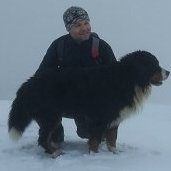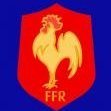Leaderboard
Popular Content
Showing content with the highest reputation on 08/04/21 in all areas
-
Hello, this is one from some 4 years ago, won a gold at the 35th IPMS Hellas annuals. Italeri kit, Gunze and Alclad paints, Eduard Bid Ed photo etched parts, Pavla resin set (partial) and some scratch building (specifically the bomb rack and interior framework). Thanks for watching. Regards, Alex54 points
-
The build was filled with enthusiasm from the start. I have a big heart for the Tornado and so many great schemes to choose. Things started to feel heavy though before the paint was applied. Anyone who has built this kit knows the pitfalls. Because of the shape of the aircraft, fuselage in particular, knows the moulding limitations in manufacturing the kit. Pressing on, little things seemed to go wrong for me but I wanted to continue and not leave it for that shelf of you know where. Vallejo Air paint and Eurodecals with India Ink accenting of the panel lines. A slight deviation in painting to show some panel changes as this aircraft morphed to a less pristine look but no less beautiful ride. Antennas to add but otherwise heading to the display case. Thank you for having a look. Craig26 points
-
This is the old Revell kit build from the box, just with the addition of spares folder decals as I bough her second hand. A simple kit with minimal interior detail, but I did like the surface detail and it looks quite nice built up. I went hard with the weathering as these aircraft tended to get pretty filthy. Not a modern "uberkit" but still a nice build.25 points
-
Evening, all! After building on and off since first lockdown(!) I've finally managed to finish my Hasegawa Harrier, built as GR.9 ZG511/82 as she was during her last deployment to Kandahar. This build was a real labour of love. It's still the best big wing Harrier in this scale in my opinion, but she really fights you along the way. The end result is worth it though. I threw lots of aftermarket goodies at this one. I felt that the subject was worth the effort. Aires cockpit (butchered to more resemble a Brit Harrier) Eduard MB Mk.12 Ejection Seat AlleyCat 100% LERX Eduard TERMA & Sniper pods DJRP from @Shaun (many thanks, again!) Eduard PE Eduard weighted wheels & outriggers Belcher Bits LAU-5003/CRV-7 Pods L'Arsenal PWIV Model Alliance decals This was my first time using Hataka Red line acrylics, and they performed flawlessly. Weathered using Windsor & Newton oils, Flory wash, and sealed with W&N Acrylic varnishes. There was a bit of scratchbuilding and correcting to do to represent a British Harrier. For anyone interested, trials & tribulations can be found on my WIP here. Anyway, here's some pics. Hope you enjoy them as much as I enjoyed building it! C&C welcomed as always. Thanks for looking! Daryl.24 points
-
- Inspired by our friend Johnny the Spadgent 1/48 and Nikolay , this is my own Hind. -I have to say that I'm very desapointed by the result, the main attraction is the riveting on which I spent many hours and the fina result is not rewarding in regards of time spent on it. - Those bloody rivets are faintly visible on the finished model and unvisible on photo which, to add of the mess, are rather blurred......I choosed avoiding pre-shading to prevent of clogging these tiny little things before painting for nuts. Coats of paint and matt varnish too thick? Irregular 3D printing? can't tell let 'us see.... - I think it is time for me to invest in a new A.P.N, this one is around 25 years old. The last three photo are from my phone......17 points
-
Tamiya Focke Wulf Fw 190A-8 1:48. Refurbish the breed ! This one here got wash with my new Flory washes, a new antenna wire, partly new decals which makes it to a squadron aircraft of 6./JG1, Störmede, Germany 1944. The kit was build and painted with Modelmaster paints some ten years back. Hope you like this one ! Cheers Bernd17 points
-
Hi guys. I managed to finish my first model for 2021. It´s ACEs FV-623 Stalwart Mk.2, built as swedish Amfibiebil 101. Sweden starts testing the Alvis Stalwart in 1962 and ultimately used 24 of them until 1985. The vehicles were initially used as supply vehicles for the coastal artillery, later as towing vehicles for the mobile artillery command system "Arte 719". The kit is quite nice but brings a lot of flash on nearly all parts and so it takes it´s time to build. I painted the Amfibiebil after a single pic from the net, most of them should have worn a uniform dark green camouflage. The little base was my first try with "water", using a 2 component epoxy resin. Regards Daniel15 points
-
This kit is my first official post of 2021( I have finished a bunch of 1/48 vehicles and figures, but this is my first wing thing) I should call it Lazarus as this thing has been resurrected from the dead multiple times. It started as a Thunderbirds livery, but the white paint started cracking to the point I had to strip it completely. Then something clouded the canopy and I had to refinish/polish it back to something barely acceptable. Then a barn cat found its way in the house and the pitot, landing gear and tail had to be repaired. On and on and on. I have a rule that I never leave a book or model unfinished. But...I decided to try something different using my cricut to cut some patterns. A few days late for 4-1-21, but hope you enjoy.14 points
-
Here is my 1:72 Eurofighter Typhoon FGR.4, ZJ949 "H", No. 1435 Flight Royal Air Force, RAF Mount Pleasant, Falkland Islands, 2015. Hasegawa kit, which is a bit disappointing for the "best 1:72 Typhoon kit on the market" - yes, it's nice molded and quite accurate, but have some annoying fit issues and only "in-flight" configuration of engine nozzles. Nothing that you expect from 2012 Hasegawa kit priced about 30 GBP. Small Eduard brass for the cockpit, Reskit exhaust nozzles and Pavla MB Mk.16A ejection seat have been added. Painted mostly with Gunze C334 "Barley Grey". Decals are mix of Hasegawa, Revell and self-printed (1435 Flight emblems). It's the third (and probably the last) model in my little project "Falklands Guardians", which was to include all 3 types of fighters used by the RAF on Falkland Islands after 1982. So here they are together: Phantom FGR.2 of 23 Squadron, RAF Stanley 1983 (Fujimi), Tornado F.3 of 1435 Flight, RAF Mt. Pleasant 1999 (Revell ex-Italeri) and Typhoon FGR.4 of 1435 Flight, RAF Mt. Pleasant 2015 (Hasegawa): Thanks for watching!13 points
-
Afternoon all, My latest off the bench, as my Russian theme moves into the jet age, is the lovely 1/72 MiG-15 from Eduard. This is the Profipack edition finished completely OOB; fit was a bit tight in areas so a bit of filler here and there, but generally it was a problem free build. Finished using Hataka Orange Line and Aclad lacquers- I've always been a bit scared of the unforgiving nature of natural metal finishes, so thought it was about time I gave it another go. My inability to achieve a flawless surface finish is highlighted more than usual, but generally I'm pretty pleased with the outcome. Eduard 1/72 Mikoyan Gurevich MiG-15bis by Shaun Schofield, on Flickr Eduard 1/72 Mikoyan Gurevich MiG-15bis by Shaun Schofield, on Flickr Eduard 1/72 Mikoyan Gurevich MiG-15bis by Shaun Schofield, on Flickr Eduard 1/72 Mikoyan Gurevich MiG-15bis by Shaun Schofield, on Flickr Eduard 1/72 Mikoyan Gurevich MiG-15bis by Shaun Schofield, on Flickr Thanks for looking, comments welcomed as always Shaun13 points
-
Finished a few months earlier, OOB with the exception of resin exhausts and tires . Painted with Tamiya and Vallejo RLM Acrylics. IMG_7355 by Pranay Kumar, on Flickr IMG_7362 by Pranay Kumar, on Flickr IMG_7343 by Pranay Kumar, on Flickr IMG_7360 by Pranay Kumar, on Flickr IMG_7358 by Pranay Kumar, on Flickr IMG_7349 by Pranay Kumar, on Flickr12 points
-
'Love' is probably too strong a word Ali but it does add to 'the fun' Ha! Perhaps I should have gone to Specsavers… I still think they could have made it clearer but hey, that's just me. With that done I could assemble and glue the bomb bay, at last: I must admit that my mojo's a bit low at the moment - I think it's all the multi-step, fiddly, different coloured things but it won't be long now… …until I start the cockpit. I will admit now that, as Jim's kit is going to be closed up, I'm only detailing one bomb bay. Who'll know? Oh, you lot, right. Well keep it quiet chaps. Bombs assembled: I noticed the gates left on the fins and thought 'Oooh, I could use those to hold the thing while painting'. Not until after I'd cut one off, obviously. Then I realised I could stick a stick up the mounting slot (fnaar!) so I cut the others off too. I also assembled the other racks: Note that the parts are the same for both steps - you just stick the racks on opposite sides. Which way for the frames? Notches on the bottom, 'front' rib going up. HTH Does mean one has no detail on the outside but hey. Then cleaned everything up ready for painting: …and applied some paste to the racks. I've also used Giorgio's dry-marker test on the bomb seams. Once the racks have had Nulm Oil and the bombs painted they can go in here:12 points
-
Now this really isn't something you see every day on RFI. A Vulcan B1a. The B1a is jointly my favourite variant of the Vulcan with the regular B1, but there has never been a kit made of the B1a. My only option to build one is to convert one from another Vulcan kit, as the only Vulcan B1 kit is incredibly rare and not cheap, and from the 1950s, it wouldn't make a very good starting point, so I have to use a B2 kit. The B2, as you will see further down, has an entirely different wing to the B1 and B1a, among many other differences, so it's quite an extensive conversion. Seriously can someone please make a modern Vulcan B1/B1a kit, I don't care what scale, if it's resin, plastic, vacuform, whatever. Just any vulcan Mk1 kit would be nice. Contrary to what most people seem to think, the B1 did not have a straight leading edge as standard, it was only the prototypes and first five production Vulcans that had this. The B1a was an upgrade to the electronic countermeasures, not the wings' leading edges, you can distinguish the two variants by the B2 style tailcone and ECM plate under the right wing, or by the paint scheme (B1as had different schemes to B1s, this is a bad example as XA895, being the prototype B1a, had a standard B1 scheme). Anyway, I chose to build my third B1a in 1/200 scale, the first two are 1/144, using the Cyberhobby kit as the starting point. At first I was planning to do XH481 in anti flash white, but part way through I changed my mind and built the prototype B1a, XA895, which happened to be the only B1a to be painted in silver and not have a refuelling probe (the kit one is pretty rubbish). I think this was also the first Vulcan in squadron service before its conversion to B1a standard. So yeah, this is my 18th Vulcan model. Comparing the B1a to the B2, you can see just how different they were. Both models are based on the same kit. And some WIP photos Highly modified landing gear. For the main gear, I used cut down main gear doors which were spare, each kit has a set of gear doors for wheels up and wheels down options so I have a lot of spares. These just happened to be almost the right shape for B1 main gear when cut down slightly, and and had the advantage of using mostly the same plastic. Similarly with the nose gear, I used spare gear doors and other bits from the kit including the air oil separator pipes that run below the engines on the B2 which were now spare (these also made the pitot tubes when cut to size). The B2 panel lines had to be removed on the wings. That was quite a tedious process. I printed a lot of the decals myself. There's a lot of spares here that might be useful one day but hey if anyone needs vulcan decals for 1/200 617 Sqn in the correct shades and sizes or 1/96 Vulcan prototype decals, I've got loads spare. Roundels and fin flashes came from the kit as I can't print white, annoyingly they're too small and the colours are off but it's close enough.11 points
-
I thought you might like to see these. The Bucc' and Seahawk are in my builds to sell box now in order to make space. I love all these but some just have to go. The Seahawk is the old FROG kit with work done in the cockpit with Aeroclub seat and undercarriage, the bay and wheel wells opened up as the kit ones were all closed in. Decals by Model Art if I recall. Then there is the Buccaneer. Its the Airfix first reissue but not the NA.39!!! with dainty fine, raised panel lines. However long before the current new tool. Modeldecals used and new seats. Sadly I could not find the refuelling probe. Then there is the Sea Fury. This is the Trumpeter kit with decals from Xtradecals. Going to keep this one though. To go with my three other Sea Furies. Quite liked this old FROG kit. Its nose shaped seemed rifght as dis the rest. And though only a few parts, it went togeher really well.11 points
-
Hallo This is my last 48th scale Spit. The next will be in 32. Now, more or less straight from the box. Just dashboard and belts added. And less decals, all insignia sprayed with Montex masks. So have a look! Happy modelling11 points
-
10 points
-
Build this for the on-going Panzer III group build. Feedback and critique are most welcome. Enjoy the photos! You can find the build thread here: Mark9 points
-
9 points
-
Source: https://www.greenmats.club/forums/topic/6380-wingsy-kits-148-messerschmitt-bf109e-1-3-4-7-–-анонс/page/6/?tab=comments#comment-106124 V.P.9 points
-
Thanks Tony. The differential shrinkage is rearing its ugly head but thankfully without too much impact. The biggest issue I'm facing is around the engine cylinders, the inlets/exhausts and the collector ring. Given that there are 20 separate components and around 40 individual connection points I am surprised its going so well. The digital manipulation can be frustrating, but the nerve wracking is assembling the final output Giorgio Thanks Dave. Resistance is futile as we all know. Airfix? ha! Now AMG I would consider. I've been telling myself for the last few weeks that I really must get back on with the Vampire. Sadly, I'm not listening. The Vampire intakes are such a mess and there's so much involved in trying to get the darned things looking correct, I've just plain been avoiding the whole shenanigans. My distraction is the Wapiti. I fell I'm almost across the finish line, at least from a digital modeling perspective. There's a few minor bits and pieces to tweak/finalize, but all the heavy lifting is done. Following the weekends little painting session I thought it may be a good diversion to do some of the actual assembly and see how it all goes together. The three main components here are the front fuselage, rear fuselage, and lower wing center section. As I'm just testing things out here I just used drops of cyano to hang things together. Good news from a printing perspective is that I managed to get the holes all the way down the undercarriage legs. Even though I thickened the legs up a tad, the material is still so thin that you can see the brass rod through the resin. I did have one little area at the bottom of one leg that didn't print properly - that may have been down to the FEP film as it's getting a bit battered with all the printing that's been going on recently. But the point of this was to see how it all goes together. Look! She's standing on her own two legs. Despite my earlier forebodings about the skinny malinky legs not being able to support the finished article, having now added the undercarriage (and brass rod), it feels a lot more secure and much stronger than I had envisaged. In the shot below, there's the two 0.85mm diameter brass rods going the full length of the undercarriage leg and about 10mm of length going into the fuselage. There's a horizontal 0.85mm axle between the hubs that will get covered in a resin spar, and there's a small 0.5mm brass rod going through the upper forward end of the undercarriage legs - that particular rod will eventually provide support for the exhaust brackets That was quite a satisfying little diversion. I'm definitely feeling a whole lot better about the ability of the aircraft to support it's own weight now without deforming the undercarriage legs. I'm going to leave this one assembled and will probably stick some more weight on it just to see how it behaves over time. In my last post I bemoaned (or think I did) the fact that I couldn't get the Jupiter assembled for whatever reason. Well, all the bits were ready now and it was time to see how that was going to go together. Was it going to put up a fight? It started off without too much hassle. The cylinders fell into place - a bit too easily if I'm honest. As Tony pointed out above, with this 3D printing malarkey, not only do we have differential shrinkage to consider, but also printing orientation, and overall sizes. For example, thick parts shrink differently from thin parts, long vs short etc. However the one problem I always find ehrrr... problematic, is printing orientation. Due to the printing process (vertically in slices), obtaining a truly flat surface can be a bit of an issue due to residual resin lying on flat surfaces and partially curing from light bleed and just generally getting in the way of things. For that reason, if I need a flat surface I always try to orient the part with the flat surface pointing downwards. Inevitable there are instances where that is not possible, such was the case with the engine cylinders. I wanted the flatness at the bottom of the cylinder for mounting purposes, but I also wanted the fine detail at the top of the cylinder as that is the part that stares you in the face when it's all assembled. In this case, the fine detail won and I had to put up with a less than optimal mounting surface on the cylinders. Overall it wasn't too bad, but I had three or four supports connecting to the mounting surface which had to be trimmed back with a sharp blade. It was perfect by any means but it was a workable solution. I got this far before remembering to take a photo. The intakes at the rear of the cylinders put up somewhat more of a fight. I had to take a few file swipes at each one in order for it to go into it's home location. I found the best method for assembly was to dry fit/file parts, and once I was happy that both the cylinder and the intake would slot home, I put a drop on each of the intake mounting points, and glued the intake and cylinder together. Before the cyano fully cured, I then fitted the sub assembly into the engine casing. Yes, it would be a whole lot easier just to print the whole darned thing, but where's the fun in that? Tedious work, and fiddly, but not overly challenging. The challenging part was adding the pushrods. I had some 0.2mm stainless wire lying around and it was put to good use here. I had to drill most of the holes in the cylinder heads before I could insert the wire. (some holes printed successfully, some not) Eyes front! Now came the biggest challenge and I was a bit apprehensive about this part. Consider that we have 20 separate components (ignoring the push rods), and over 3 dozen connection points... then take into account that flat surface that I mentioned earlier. The flatness of the cylinder mounting ledge affects the overall height of the collector ring mounting points from the engine casing center. Does that make sense? Now do that 9 times. Now for the collector ring. All the connection points are on a fixed diameter. If one cylinder is too high, or two low, then the collector ring is not going to fit. Guess what? I don't know how, but it fitted. Okay, not absolutely perfect, but close enough that I am not going to make any dimensional changes to any of the parts. I had to press a bit harder than I'd have liked in a couple of areas, but everything went home as intended. I even remembered to place the exhaust outlets at the bottom of the engine casing (it's keyed to fit into the fuselage, so if you glue the collector ring out of the correct rotation, the exhausts ain't gonna fit later. I wish I could paint exhausts more convincingly. I'll try some pastel weathering on that later to see if I can make it look any better. Might need to take a few lessons from @giemme here. Gratuitous show just because I was feeling rather smug at this point Even smugger now... But we're not finished just yet, oh no we're not. I was also having palpitations about that airscrew and how it was going to turn out given the lack of information and my limited CAD skills. Off to a good start here - I printed both versions to see which looked better and they both printed without issue. Now warping... that's always a potential issue and sometimes it's difficult to prevent so I took no chances here. Once the parts were IPA rinsed, I clamped the parts to a small aluminum channel I had lying around. I left this for at least two days to allow the resin to fully dry out (not bothering about cure at this point). I find that there is a definite difference in 'feel' of the parts a day or two after they've come out of the IPA rinse, so wanted to make sure I had eliminated as much residual moisture as I could. After I could feel the difference in tactility I took the parts (still clamped) and laid them on a window cill where they got some daylight. Not direct sunlight - I didn't want them subject to heat while curing, but enough daylight to get the post cure to kick off and I left them there for an afternoon. Clamps removed - and everything is still flat. By preventing one issue (warping) I now provide myself with another challenge - removing the airscrew from the now cured base block without damaging the part. It would have been very easy to remove the supports prior to curing when the part is still flexible, but then I would not have had any decent way of clamping the airscrew to keep it flat whilst curing. So, very, very carefully, I cut through all the supports with a razor saw as best I could. Some of them still broke free at the connection with the airscrew but it looks like I got away with it this time. I have a 1mm brass rod glued into the back face of the airscrew. I designed in a 2mm diameter hole in the engine casing in which I placed some 2mm (obviously!) brass tube. The Airscrew can now be slid nicely into the engine casing. I should have taken more photos but got carried away in the heat of the moment. The brass rod/brass tube mounting method means that you can fit a small boss at the back end of the 1mm rod, to keep it locked into the engine casing, but the airscrew is still free to rotate. You'll be pleased to hear that we are finally coming to the end at last. The exhaust is just dry fitted at the mo' but you can see how that brass rod I mentioned earlier is going to come in useful as a mounting point for the exhaust bracket It will be a delicate operation to make and actually fix that bracket to the rod and exhaust but that's how it is on the 1:1 and it'll be a nice detail touch. There. Done. I'm all Wapiti'd out now.9 points
-
Hello Here is a build done in early 2020. Hasegawa F4U-7 Aires Cockpit Aires engine Pavla control surfaces Obsureco wheels Brassin HVAR and bomb Adecco decal The model depicts a plane during 1956 Suez Canal crisis. Some sources say that this actual airframe had only yellow stripes wihtout black ones. Aires cockpit needs some added details to depict a -7 such as armrests, and armament control boxes on each sides of the gunsight. Paint is AKREAL COLORS RC258 Dark sea blue, tuned with MrHobby C375 and a drop of H5. Hope you like it! Critiques and comments welcomed! Romain8 points
-
This is Renaissance Models 1/43 Alfa 158 Alfetta, painted to represent the car of Giuseppe Farina at the 1950 Italian GP: It's a nice little kit, with lots of photoetech: Plus body in resin etc: The engine cover is heavily louvred and Renaissance kindly include a former so that you can shape it into submission: And the grille is a PE delight/nightmare, depending on your mood and how much gets lost in the carpet: Finished model: Time for something a bit larger...8 points
-
Hello A couple of photos with one of my my latest kit. Arma Hobby 1/72nd Hawker Hurricane Mk.Ia - Eastern Front limited edition. Almost OOB. Painted old roundels under the decal crosses (as on the real machines) and painted tactical numbers. Vallejo Model Air paints. Comments are welcome 210 by Iulian Macovei, on Flickr 209 by Iulian Macovei, on Flickr 208 by Iulian Macovei, on Flickr 207 by Iulian Macovei, on Flickr 206 by Iulian Macovei, on Flickr 205 by Iulian Macovei, on Flickr 204 by Iulian Macovei, on Flickr 203 by Iulian Macovei, on Flickr 202 by Iulian Macovei, on Flickr 201 by Iulian Macovei, on Flickr8 points
-
Now in a Ced build these two observations can both (rather uniquely) be true! In other (thread drift) news....I've now received a parcel from Jim at the 453rd Museum, and so will have to commit some modelling for the first time in a couple or more years. I've tapped and unwrapped it and ordered some bits and bobs and some paint so it must be going to happen.....8 points
-
I dove into the kit box a little deeper, and it is as “Whirly” said: The rotor blades are made from a special black material, and not from the same (traditional) resin material as the rest of the kit. I also have the Unicraft resin kit of the HH-52– I got it a few years before the Whirlybird kit was released. It isn’t quite as nice, so I figure I’ll do the nicer WB kit as my (first-ever) resin build for this GB. When I built my Italeri HH-19 model a couple of years ago, it had been OOP for some time. I bought a two kit bundle on ebay- one complete, one only missing the clear parts, at a good price. I figure I’ll never find replacement clear parts, and even if I did, I wouldn’t build a second HH-19. My plan was to use the incomplete kit as a parts donor for the Unicraft kit, as the HH-52 used the same proven rotorhead and rotors as the older HH-19, in case I needed them. (Hoist, wheels, interior bits, etc. may come in handy, too.). It is my first resin kit build, so It is nice to know that I have a reserve collection of parts in case I really mess something up here...😁 I’m not afraid of a little scratchbuilding, either! Here’s a shot of my recently completed scratchbuild- a 42 inch long USS Guadalcanal in 1/144 scale: I finished it last fall, so it isn’t GB eligible. (I would have needed a GB that ran for a couple of years to meet the finish date, even with a 25% head start!) The only IM bits are the Avengers and Wildcats....8 points
-
Yesterday the bulk of the engine components got their paint: Vallejo Metal Color; Silver for the push-rods, Exhaust Manifold for the cylinders and a mix of the two for the 'spider' which I'm guessing is the fuel-feed pipes: ... and the rearward parts were assembled - it might be my camera, and much as I would like to blame it, it could just as easily be the lack of my photographic skills which basically consist of setting the camera to 'Auto' for everything apart from 'macro on/off', but suddenly everything looks the same colour, which it isn't. I'll try taking some pictures in natural light later: This looks quite a complicated manouevre, but everything goes together nicely. However you do need to keep your wits about you as all the parts are keyed to each other and while they might fit in some other position, that means something else won't fit later. As Alistair @Mottlemaster noted earlier the diamond-shaped mounting key at the back of the engine (facing upwards in the picture above) is not symmetrical so that's something to watch for. The exhaust pipe arrangement is beautiful; mine got a coat of Tamiya Dark Iron, I love this colour but again its subtleties are rather lost in this picture: These have now been fitted and it is a lovely piece of engineering Cheers, Stew8 points
-
A nice kit and my favourite build to date. Added the CMK extra detail cockpit the first time I had used extra bits for a kit. I have to say it was a nightmare, bits broke while taking them off the blocks, so I ended up with a mixture of the extra kit and the box original kit. Once it was together the cockpit did look nice, but it would not fit in the air frame so it took a lot of cutting, sanding and eventually I got it to fit, but I will probably not bother with a kit like that again! I tried doing an oil wash all over before I painted it, although I am not sure it made much difference to be honest. I do my camouflage by hand, not sure if that is the best way but seems to give good results with a fuzzy line between the colours. Keep breaking bits off as I get near the end, so you will notice some bits missing! Had a go with some weathering as well, which I think has come out ok. I leaned towards less is more. The decals on the underside of the wing were impossible to get on so you will see they are a bit of a mess. I am pleased with this kit though, on to the next!8 points
-
I've long wanted to convert Heller's classic 1:72nd DC-6 to a DC-7 so I recently took the plunge and ordered the Aircraft in Miniature conversion set from Hannants. A box soon arrived crammed full of nicely molded grey resin along with a comprehensive set of instructions. The conversion kit gives you fuselage plugs to extend the DC-6 fuse to the longer DC-7, a new wing centre section, a new taller and squarer fin, saddle tanks for the engines, new cowlings and cooling gills (open or closed) as well as white-metal 4-bladed props. All in all a very comprehensive set. Looking at the work ahead I have decided to tackle the wings and engines first as these look to be the most demanding parts of the conversion. My first job was to remove the DC-6 engine nacelle extensions that sit over the wing - the new saddle tanks will replace these in due course: Next I prepared the upper wings for mating to the new, extended wing centre-section by removing the inner section of the wing to fuselage fairing: I then added a false roof to the main gear bays as the surgery required to add the saddle tanks will undoubtedly be ugly, and then I offered the lower wings to the new wingbox. The original DC-6 centre-section gives a useful comparison: I've encountered a small issue in the fact the chord of the new resin wingbox is greater than that of the DC-6 wing, but a file should soon take care of that... More updates to follow as this project progresses - stay tuned! All the best, Tom7 points
-
From the Airfix Wildlife series, though to use the logical argument of Ripping Yarns, can a 1/1 copy be classed as a model?7 points
-
Hi folk's,well I,m happy with the tidying up of the stripes and the sturdiness of the landing gear.Prop painting in progress now.7 points
-
Hi This is my second Eduard P-51D This time I choosed the green tails of the 457th FS I didn't add the two long range fuel tanks because I prefer a plane without it Some other photos in the link bellow P-51D 457th FS7 points
-
This one has been completed: Will post some better shots in the RFI section when I get to take some.7 points
-
Time for another update, before i depart on another 8-day Disaster movie. I was not happy with the overall finish of the Bucc. While it was smooth and shiny, it was also smudgy and the remainder of the enamel wash gave the model a rather skanky appearance. Problem with gloss finishes is, they're almost as bad as silver. They tend to highlight every little surface imperfection. So, i masked off the extra dark sea grey and sprayed the upper surfaces with Mr Color Semi Gloss, 181. I am pleased with how it turned out... Some parting thoughts about the windscreen. The Eduard masks worked extremely well, but the fit of the windscreen is so good that if i were to do it over, i'd probably delay installing it until after painting. I nearly had a heart attack when i removed the masking. Dust from painting had gotten onto the inside surface of the windscreen and i was at a loss as to how to fix this. I wound up mixing some warm soapy water, and i shot the inside of the windscreen with my Iwata, using it like a pressure washer. I think its gonna be okay. When i get home, i'll need to clean up some overspray one one of the intake lips, then i will begin to finalize installation of the undercarriage. The outboard Rocket pods are ready to go, but i'm not crazy about mounting the underwing tanks. They don't exactly help the looks of the thing. I should probably start thinking about mounting the speed brake too.... Oh well. See you in a couple weeks.7 points
-
Making a spot for the start of this build HMS York heavy cruiser got the kit for a bargain at the last show Bolton I managed to get to before everything fell apart. 😷 Since then I have acquired a few extras ( The BIG BOY'S came around honest ) to go with it mostly for her sister ship Exeter but sure I can make them fit and very inspired by @Jamie @ Sovereign Hobbies and @robgizlu builds I will be attempting the same camouflage as the box art a bit like Rob's HMS Berwick build light grey and dark grey 507C and 507B I think I have that right. And there should be another parcel on it's way soon to help add a bit more. Stay Safe beefy6 points
-
A RFM kit, good details, bad plastic material, workable track lins is a big plus. Thank you for watching Please visit mu facebook page for more details: https://www.facebook.com/liu.andy.3701?ref=bookmarks6 points
-
It's all done at last ...........a few Aber kits and a Tamiya early production kit no-216 and some scrounging around on the interwebs for info and i finally got there........ Hope you like And now the finished article.......Tiger 100 of the 502nd as seen during the fighting around the Leningrad sector 19426 points
-
Sooooooooo Not heard much from Quack for a bit Wonder what he's been up to Oh Lordy! It looks like he's been mashing a perfectly good Kinetic 1/48 Alpha Jet........poor thing...... Hope he's got a VERY good explanation for this...... Errrr, well, it's like this, y'see .......... I'd finished the 74 Sqn Phantom FGR.2 which I was quite pleased with - then looked around for summat else t'build. I've got a Revell 1/48 Tornado GR.4 which I want to finish as a Granby GR.1, but frankly it scares me a bit and it's likely to be a bit of a long slog (the way I do things!) I'd looked around for another (quicker) 1/48 Brit jet of the cold war era but nothing really took my fancy - unable to find an Airfix 1/48 Lightning F.6 or Canberra PR.9, which were on my "ooooh-I-do-fancy-one-of-those" list - couldn't even track down a Kinetic Sea Harrier. Eventually I decided to have a go at the Kinetic 1/48 Alpha Jet - and stick RAF roundels on it - just for a giggle. Chose this boxing as it even comes with QinetiQ markings.......... boxtop by Niall Robertson, on Flickr And look! It shows an under-fuselage gun pod thingy that fires little jet or rocket propelled bullets!!!! boxtop (2) by Niall Robertson, on Flickr I even thought I might have a bit of fun with a WIP thread.......... Started on the cockpit - IPs are quite well detailed but rather softly moulded, and I totally @rsed the painting. Not to worry thinks Quack, I'll drill out the instruments and fill the nice circular voids with paint, how neat! After burning out my dremel-oid drill (it was just tired, old and useless - like Quack) I tried the old pin vice. Unfortunately the panel ended up with some rather odd perforations - reasonably IP-like, but nothing remotely resembling an Alpha Jet IP! OK - bash on, but NO WIP, and Cockpit closed for once. Fabric cover on the cockpit coaming was done with a layer of tissue stuck down and wrinkled with PVA, then painted tan. So far so Good-ish. Fit was basically ok, but wait.....why are those huge deep panels lines so prominent? The ground crew could drop a sandwich in there, and lose it forever, unless they salvage a toastie at the end of the sortie. Losing some interest now - worse when realising that the Destructions are rather vague.........sometimes........often............a bit.........maybe........yeah, er.............better look at more pictures of the real thing.......again.......and again........ Losing even more interest now - just wanting to get on with it and switch to something I'm really captivated by - maybe I should've started the Tornado after all??? Oh look - there are predrilled holes under the wings that need filled since the SpaghettiQ aircraft were always too shy to allow themselves to be seen with underwing tanks or ordnance - no biggie - just wedge a bit of stretched sprue in there then shave it off and sand it down. Painting next! Yummy! Black! My Favourite! Actually - after a past disaster with an RAF Black Hawk ( I mean a Hawk ............ that's black!) I was reasonably happy with the finish with MRP paint on this. Decals went on nicely - Cartograph beauties kindly provided in the Kinetic box. A few overcoats with W&N Galeria Gloss to seal in the decals. Clever Quack ( ................. ) then decides to represent the anti glare panel on the nose with a neat patch of matt varnish-over-black. Masked and hand painted with thinned Vallejo matt) - truly horrible lines when the masking came off - really dreadful raised ridges that needed completely re-sanded, repainted, and re-glossed - then masked off again and sprayed with a little Alclad II Matt - Finally! a good finish! Except when the masking tape came off this time so did a chunk of the QinetiQ Q!!!!!! Dammit....they....were....sealed.....! Resisting the urge to dig a very deep hole in the garden - I (sort of) managed a decal repair using part of a Belgian roundel ........ not great, but ok from 6 foot viewing distance, without my glasses. Ever had one of those draining builds which seem ok initially but then you realise you're not as interested as you thought, and you just plod on making more and more silly errors as your interest wanes ever further?????? Anyway. It got finished! And it looks like this................ 20210404_095444 by Niall Robertson, on Flickr 20210404_095355 by Niall Robertson, on Flickr 20210404_095336 by Niall Robertson, on Flickr 20210404_095326 by Niall Robertson, on Flickr 20210404_095153 by Niall Robertson, on Flickr 20210404_095116 by Niall Robertson, on Flickr 20210404_095054 by Niall Robertson, on Flickr 20210404_095039 by Niall Robertson, on Flickr 20210404_095021 by Niall Robertson, on Flickr Now, anybody got any suggestions for the next build - at the moment it looks like the Tornado with Granby relish. Stay safe y'all. Keep calm and mangle plastic! Q6 points
-
Evening guys and gals, More progress on the mammoth B-52 project to update you on. I've been beavering away on the cockpit and flight deck of late and have built a basic interior using the Sanger seats with a few mods. I've also used the Sanger control columns even though they were, in my humble opinion, a little oversized: There's scope to add more detail here but life is too short to waste time on making things that'll never be seen! I've made and added the escape hatches for the ejector seats above the pilots: And then the canopy was protected whilst some filler was added to blend everything in: With the filler dry everything was sanded and blended in: I'm quite pleased with that - the blackout curtains made from kitchen foil look the part, too! As I'm making this as a late 1990's to early 2000's machine, I've also made and added the ALQ-155 fairing on the nose from Milliput - these have since been removed on current BUFFS due to various avionics upgrades. There's a little more sanding and some scribing to be done around this area, but I'm almost there with the forward fuselage now. Happy days. Tom6 points
-
Hi Jeff yes I was looking at your build the other day very nice but way to small for me 600 scale. Thanks for joining in fellas well not one but two packages arrived today were not supposed to be here until the end of the month only 2 weeks from ordering well pleased More bits of PE not just for this build but also my WTF Zeppelin and some very nice bits from Micro Master just waiting on my books now. Thanks to the BIG lad @robgizlu for putting me onto these Not all for this build before someone picks up on the quad torpedo launchers. Stay Safe beefy6 points
-
Been up to my eyes sculpting creases and really enjoying it! So time for an update Started by beginning the crease process on the right leg, so I started by sculpting the same bulge from the top of the boots, and builing up the top of the calf in the same way IMG_20210406_194247 by Nick Frost, on Flickr IMG_20210406_194538_1 by Nick Frost, on Flickr IMG_20210406_194631 by Nick Frost, on Flickr Then I started adding creases with sausages of clay I can then blend in at the edges IMG_20210406_195001 by Nick Frost, on Flickr IMG_20210406_195323 by Nick Frost, on Flickr IMG_20210406_200109 by Nick Frost, on Flickr Back of the leg was looking bare so I decided to add a big dramatic one! IMG_20210406_200241 by Nick Frost, on Flickr IMG_20210406_200541 by Nick Frost, on Flickr IMG_20210406_200809 by Nick Frost, on Flickr The silicone blending brush I use has really come into its own on this sculpt, didn't use them much on the last sculpt but for the creases its been really great to use for blending and shaping. I've been trying not to leave big gaps between the creases as that looks weird and not right to my eye, so I add smaller creases in between IMG_20210406_201057 by Nick Frost, on Flickr IMG_20210406_201229 by Nick Frost, on Flickr The knee was looking a bit thin too so I began bulking it out at the front and back IMG_20210406_201229 by Nick Frost, on Flickr IMG_20210406_202028 by Nick Frost, on Flickr IMG_20210406_202150 by Nick Frost, on Flickr IMG_20210406_202557 by Nick Frost, on Flickr IMG_20210406_202741 by Nick Frost, on Flickr At this point I started thinking about the knee guards he wears, didn't want to go to crazy before I added them so I can shape the creases around them accordingly, so I cut away a bit to make an overhang of material IMG_20210406_203636 by Nick Frost, on Flickr Then cut a slab of clay to start builing up the knee guard itself IMG_20210406_203822 by Nick Frost, on Flickr IMG_20210406_204521 by Nick Frost, on Flickr Then had to cut away a bit more to get it in position IMG_20210406_204521 by Nick Frost, on Flickr IMG_20210406_204724 by Nick Frost, on Flickr Filled and smoothed the sides to help bind it and hold its shape IMG_20210406_205052 by Nick Frost, on Flickr IMG_20210406_205236 by Nick Frost, on Flickr IMG_20210406_205333 by Nick Frost, on Flickr IMG_20210406_205544 by Nick Frost, on Flickr That was the end of the night before lasts session, and I came away feeling slightly unsatisfied, kept looking at the pictures and the sculpt and when I came back to it last night I decided the knee pad was too narrow, and I really need to up the creases, especially as I still felt the knee itself was a little thin. So first thing I did was rip of the knee guard and add more clay to widen it then got it back into position IMG_20210407_185646 by Nick Frost, on Flickr IMG_20210407_185703 by Nick Frost, on Flickr IMG_20210407_185750 by Nick Frost, on Flickr IMG_20210407_185857 by Nick Frost, on Flickr Much happier once that was on, liked it it a lot more. Then I wanted to add another large crease to the inside of calf top to helo begin the process of widening the knee. IMG_20210407_190606 by Nick Frost, on Flickr IMG_20210407_190722 by Nick Frost, on Flickr IMG_20210407_191604 by Nick Frost, on Flickr IMG_20210407_191702 by Nick Frost, on Flickr IMG_20210407_192324 by Nick Frost, on Flickr IMG_20210407_192334 by Nick Frost, on Flickr Then added more clay to the sides of the knee to help build it up, smoothed it quite roughly to also shape it into creases at the same time IMG_20210407_192346 by Nick Frost, on Flickr IMG_20210407_192536 by Nick Frost, on Flickr Also tried to keep definition of the knee guard as I went too by defining the edge as I went IMG_20210407_192629 by Nick Frost, on Flickr IMG_20210407_192942 by Nick Frost, on Flickr IMG_20210407_192951 by Nick Frost, on Flickr Then began adding creases around the knee guard now its properly in position IMG_20210407_193204 by Nick Frost, on Flickr IMG_20210407_193431 by Nick Frost, on Flickr IMG_20210407_193539 by Nick Frost, on Flickr IMG_20210407_194244 by Nick Frost, on Flickr IMG_20210407_195634 by Nick Frost, on Flickr IMG_20210407_195757 by Nick Frost, on Flickr IMG_20210407_195931 by Nick Frost, on Flickr Aaaand thats where Im up to! Had a blast with the creases and got way further than I thought I would which is good. I'll do more to the right leg but before that I'll get the left leg to the same point. Thanks for looking, more soon6 points
-
Just finished this one from my box of doomed unfinished builds started in 2018 or there abouts. BPK kit of the Canadair CC-144 Challenger. This last pic shows the little one in company with a bigger one to 1/72nd which, in turn, is the resin kit put out by Leading Edge several years ago. The 1/144 kit is rather cute and the tiny wheels gave me shivers when handling to be fixed to the legs. Fortunately no losses!! The windscreen is so clear you can actually see in to the cockpit!!! The whole fuselage was moulded in clear... and very clear too! here its in company with my recent 789 to show size comparison. The Challenger is a reasonably big aeroplane but look at how big the Boeing is.6 points
-
An update! A small but significant step forwards, the ERA panels are now attached and have been painted in Humbrol 030 which contrasts nicely with the 117 that is the green in the camouflage. Photos of the real thing shows a contrast but different light shows differing levels of contrast. I’ve also begun to attach a few bits to the rear of the turret. M60A1ERA 21 by phil da greek, on Flickr M60A1ERA 20 by phil da greek, on Flickr M60A1ERA 19 by phil da greek, on Flickr The paint is all still fresh on top but underneath is ready for some dirt so that’s the next job, followed by wheels & the kit tracks. Thanks for looking in.6 points
-
A recent house move uncovered quite a few 1/144 scale kits that I'd forgotten about so I'm in the process of cracking on with them (the wife said for every 3 kits finished I can get another one, she never mentioned what scale they had to be ) A pretty good little kit, goes together well, no complaints. Now I've seen the photos I've noticed I need to clean up the paint on the canopy rails. Next up is a Valiant in the same scale, thankfully a little bigger than a Starfighter but still too small for my eyes these days, definitely going to have to change the scale to 1/48 I think! IMG_2254 by tony_inkster, on Flickr IMG_2255 by tony_inkster, on Flickr IMG_2258 by tony_inkster, on Flickr IMG_2257 by tony_inkster, on Flickr IMG_2256 by tony_inkster, on Flickr5 points
-
Thanks a lot for your kind praise guys; I'm very happy you like the work. The windscreen is installed and the seal strip painted, wipers and headlights followed. It would be possible to come up with something better than the Airfix headlights, but I had actually expected worse so I leave them. The rear window was painted black all around the inner edge and glue joints. With that dry I followed with red on top of that on the inside top edge, to recreate the body colour steel profile the headliner tucks in behind on the real car. I made some templates and cut door cards from my painted decal film. The chrome strips are self adhesive from Tron (well known for us into 1/43) in Italy, not sure they are still available. And here applied. I have now made some very simple inner door handles and cranks that will also be fitted once paint is dry. Door windows fitted, the strips are cut from some photo etch scrap. The dashboard with steering wheel has also been fitted.5 points
-
85€ it was because "the box is damaged". Well it was. But the only damage I could find was the shipping labels and stuff taped onto it when sent to the first customer. They should know better by now. But in the end I don't care about boxes and am very happy with the price I paid. The parts are large, casting quality is not what I'd expect on first glance with such an expensive plastic kit, but I know Franzis quality never was worth its money, so I was prepared for that. It will get stowed away and probably will be built when my son is old enough and interested. Being a working model this should be quite educative. Ah right, haven't postet much here since I'm a dad. I only upgraded my family status in January 😄5 points
-
Hello all. I have had a very productive day today. I used my new-found(!) skills with the computer and produced an instrument panel which was not far out from the right size and fitted it to some 20 thou card with PVA - probably not the best thing, some of the ink has smeared but I can only see the problem when I have my magnifiers on! You cannot really tell it was the Wingnut Wings instruction manual decal placement diagram complete with lines showing what transfers go where! I sanded the top edge to a slight curve and added it to the underside of the top decking: I will need to add a mounting post on the left hand side later when I get the floor ready to fit. Aeroclub supplied the control columns in white metal. They had been bent, but I found out that white metal is really soft so it bent back nicely. The colours are WNW suggestions. I think I maybe should have cleaned the columns up a little more, but in actual size they look fine: I have also added a bit more detail into the interior floor pan area; a couple of rudder pedals (they are about right in position as I used a pilot from the Airfix Be12c to judge how far away they should be), and I also added a rudimentary bar to allow for the future fitting of a backrest for the 2nd pilot (port said) - he only had what looked like a canvas backrest to lean against! I have put a couple of 'cushions' on the seat board, and the wide lap belts were made from 2mm tape: Dry-fitting the floor pan in and it all fits (amazingly): I have marked where the control columns go, they must fit in between the rudder pedals and the seats. Not much will be seen once the top decking goes on though. The nose area is still not glued yet, it will need some work, and the front of the top decking will be pulled down to the fuselage when I do glue it, the gap is not that bad. The top deck will be glued once the wing is fitted, but before the interior, as that will give me chance to get the needle files in to clean up the cockpit surround. Thanks for looking, I am really enjoying this kit, thanks Aeroclub! Cheers, Ray5 points
-
Hello, This is old school kit from 1976, with raised panel lines. I like this classic kits as they were good engineered (not too complicated to have more fun and less work and some fit problems are mostly easy to fix). Airbrushed with Revell and Humrol enamels. Only wheels were changed and interior detais added. Martin5 points
-
Morning all Suspension and steering parts all done.may weather it a bit with some accent panel line black. Not sure yet. I like the wheel finish as is so all I did was use a black wash to accentuate the Honda "H" and add the tyre valve (idea copied with no shame whatsoever from one of @johnlambert build logs! 😄) Yes the tyre still needs a bit of sanding down... Obviously couldn't resist That lead me to spot that there is a rather large gap between the wheel arch and the body Which in my eyes doesn't look great so I'll have to use some plastic card to fill the gaps. I found some photos of my prelude. This was taken before I had the whole front (doors included) resprayed. It looked a lot better for it. Of course I didn't take any photos once the paint job had been done because that would have been a really good idea...🙄🙃. I also had the exhaust replaced with a stainless steel one when I got the car because the original one failed the MOT and getting a custom one was cheaper than getting a Honda replacement! I'm going to try and scratch build the muffler and exhaust tip. The rear of the exhaust was an oval shape and I couldn't find something suitable in 1:24 scale on the web. Thanks for looking. Nick5 points
-
I made some progress but not as fast as I'd like, because I'm also working on a not so young and rather rare car of a friend in my garage, it's very pleasant too. I made some progress on the teak varnish, I applied a waxed varnish, instead of the matte one, it's nicer. Installation of the dock's capstans. I also engraved a part of the plate, the White Star part that was not deep enough. To do this, I just cut a vinyl mask and carefully center it by gluing it and plugging the 12 volts. Nothing is glued.I got the dock a little dirtier. I still have a teak board to put on the back of the dock to hide the plastic. And it will be finished after gluing the whole thing.5 points
-
Decaling now finished. Some touch ups to go and to finish up the pylons and harpoons5 points
This leaderboard is set to London/GMT+01:00

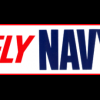
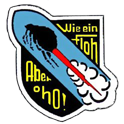
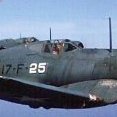

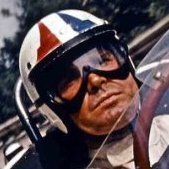

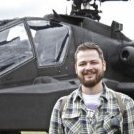
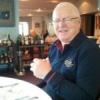

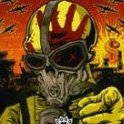

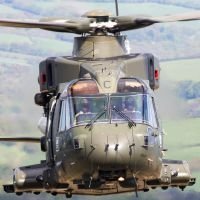
.thumb.jpeg.8799c240c730b916dd0efd9a2bcf19cf.jpeg)

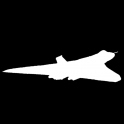

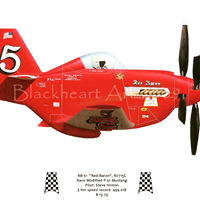

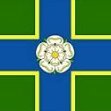


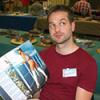
.thumb.jpg.cfc129272ffec824439b15e6013d5952.jpg)
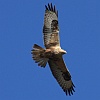
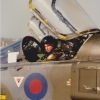







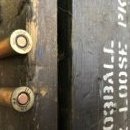
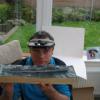

.thumb.jpg.185722f59f1fa4bdb30ac86c07b06d0d.jpg)
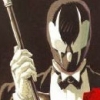

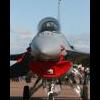
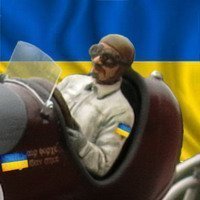

.thumb.jpg.ba34a9f6ddce411193946dbdcc7b5fe8.jpg)
